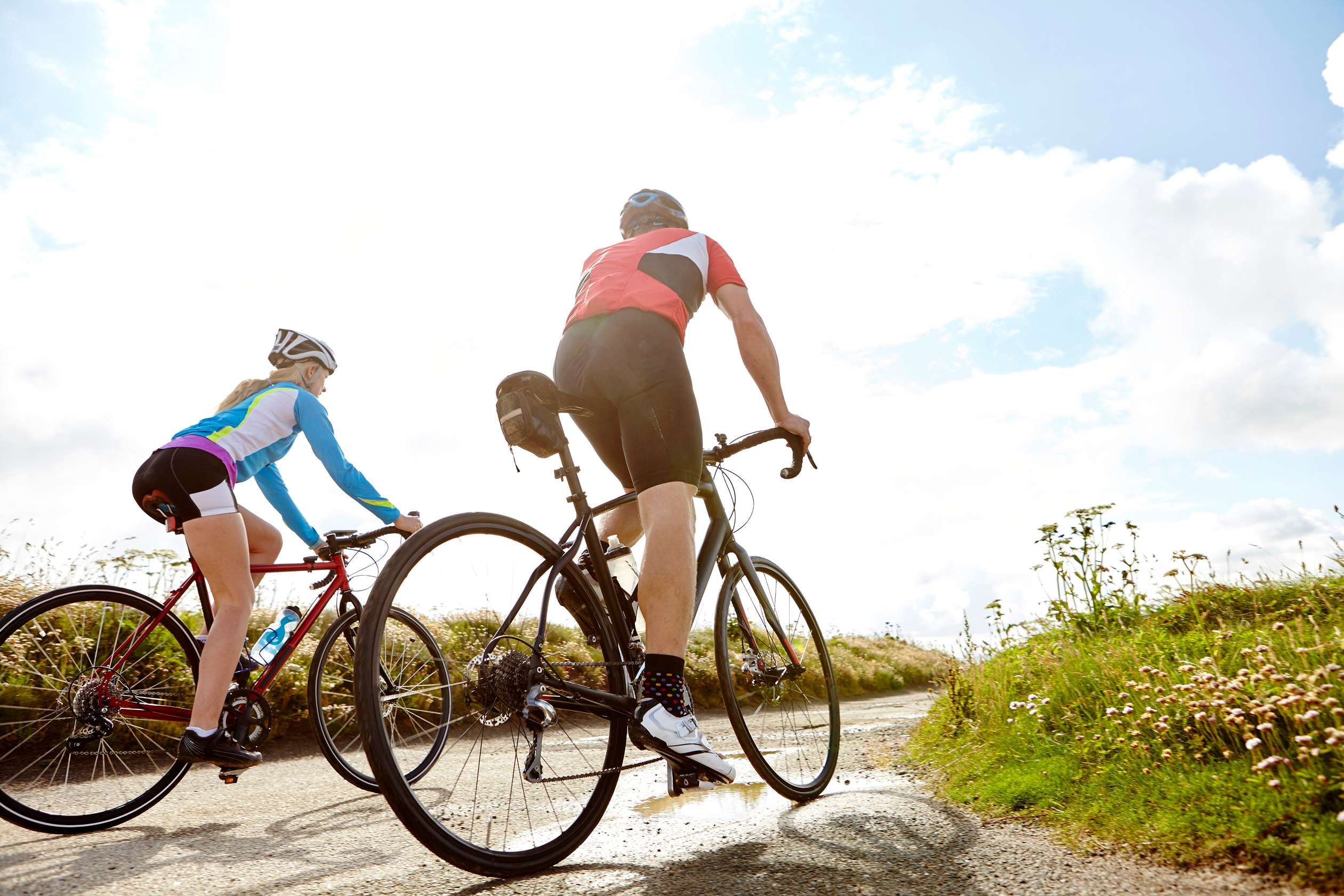Cycling and Spine Health: How to Ride Pain-Free All Summer

Whether you’re a weekend warrior, a daily commuter, or a weekend explorer, cycling is one of the best low-impact workouts around. But even a sport that’s gentle on your joints can lead to back pain if you’re not careful. In this guide, MidAmerica Orthopaedics breaks down why cyclists commonly experience spinal discomfort, how to optimize your posture and equipment, and which exercises and stretches can keep you on the bike all season long—pain-free.
Why Cyclists Get Back Pain
Cycling places unique demands on your spine. Understanding the root causes helps you take preventive action:
-
Prolonged Flexion
Leaning forward for extended periods can overstretch spinal ligaments and overload your lower back muscles. -
Poor Bike Fit
A saddle that’s too high or handlebars that are too low force you into extreme flexion, creating muscle strain. -
Weak Core and Hip Stabilizers
When your abdominal and glute muscles aren’t strong enough, your lumbar spine (lower back) bears the brunt of pedaling forces. -
Repetitive Motion
The cyclical motion of pedaling amplifies minor imbalances, leading to overuse injuries over time.
1. Optimize Your Bike Fit
A proper fit is the foundation of a pain-free ride. Consider a professional bike fit, or follow these key adjustments:
-
Saddle Height
Your knee should have a slight bend (about 25–30°) at the bottom of the pedal stroke. Too much extension forces your pelvis to rock forward, aggravating your lower back. -
Saddle Fore-Aft Position
With the pedals level, the front of your knee should align over the pedal axle. Moving the saddle forward or backward adjusts hip angle and spinal loading. -
Handlebar Height & Reach
Handlebars set at or slightly above saddle height reduce excessive forward lean. Shortening the reach (stem length) can help you sit more upright. -
Cleat Position (Clip-In Pedals)
Position cleats so that your feet sit naturally over the pedal axle. Misaligned cleats can alter hip mechanics and transfer undue stress to your spine.
2. Focus on Posture & Pedaling Technique
Even with a perfect fit, your posture and pedaling style make all the difference:
-
Neutral Spine Alignment
Imagine a straight line from your head through your pelvis. Keep your chest open and shoulders relaxed, avoiding a rounded back. -
Engage Your Core
Activate abdominal muscles lightly throughout the ride. A strong core reduces rotational forces on your lumbar spine. -
Smooth Pedaling
Push down, pull back, lift up, and push forward in a continuous circle. This “four-quadrant” technique balances muscle activation and minimizes fatigue. -
Shift Positions Regularly
Change hand grip, shift weight between saddle and handlebars, or stand out of the saddle for a few revolutions every 10–15 minutes to relieve pressure.
3. Pre-Ride Warm-Up & Post-Ride Cool-Down
Warming up and cooling down are critical for spinal health:
-
Warm-Up (5–10 minutes)
- Gentle pedaling at low resistance
- Dynamic stretches: torso twists, arm circles, leg swings
-
Cool-Down (5–10 minutes)
- Gradually reduce intensity
- Static stretches: hamstring stretch, cat-cow spine mobilization, seated spinal twist
4. Strengthening Exercises Off the Bike
A targeted off-bike routine builds the muscle support your spine needs:
-
Plank Variations
Builds deep core stability. Hold a forearm plank for 30–60 seconds; progress to side planks. -
Bird Dog
On hands and knees, extend the opposite arm and leg while maintaining a flat back. Repeat 10–12 reps per side. -
Glute Bridges
Lie on your back with knees bent, lift hips until hips, torso, and thighs form a straight line. Hold for 2–3 seconds, lower slowly. Do 12–15 reps. -
Hip Flexor Stretch
Kneel on one knee, push hips forward, keeping torso upright. Hold each side for 30 seconds. -
Thoracic Mobility Drills
Using a foam roller or seated rotation stretches to improve mid-back flexibility and reduce compensatory lumbar flexion.
5. Smart Training Habits
Integrate healthy habits into your cycling regime:
-
Incremental Mileage Increases
Follow the 10% rule: increase weekly mileage by no more than 10% to avoid overload. -
Rest & Recovery
Schedule at least one full rest day per week. Incorporate active recovery rides at an easy pace. -
Cross-Training
Add swimming, yoga, or Pilates to maintain overall strength and flexibility. -
Listen to Your Body
Early warning signs—niggles, stiffness, or localized soreness—signal it’s time to adjust your ride intensity or technique.
6. When to Seek Professional Help
Most cycling-related back pain responds to these preventive strategies. However, consult an orthopaedic specialist if you experience:
- Sharp or radiating pain into the legs
- Numbness, tingling, or weakness in the lower extremities
- Pain that persists despite rest, stretching, and strengthening
- Bowel or bladder changes with back pain
Early evaluation can rule out serious conditions like disc herniation or spinal stenosis and guide you toward the right treatment—often preventing the need for surgery.
Ride Strong, Ride Smart
Cycling is a lifelong pursuit that delivers fitness, freedom, and fun. By optimizing your bike fit, refining your posture, strengthening supportive muscles, and listening to your body, you can protect your spine and enjoy every mile—pain-free.
Ready to fine-tune your setup or get targeted guidance for your back pain? Contact MidAmerica Orthopaedics today to schedule a consultation with our specialist team. Let’s keep you rolling all summer long.

